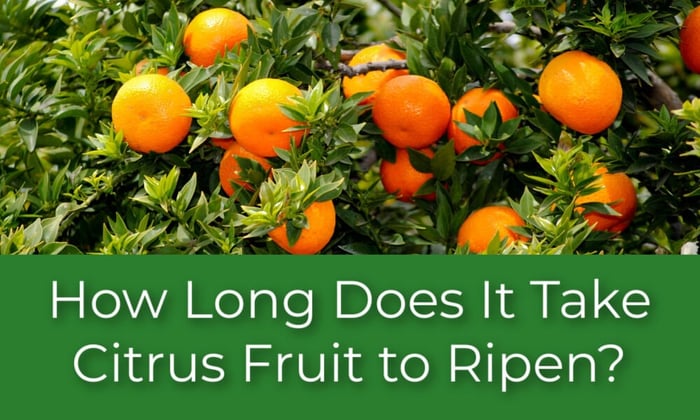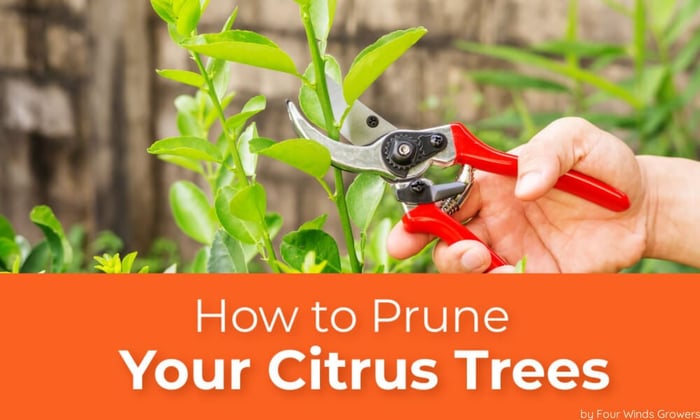Table of Contents
Citrus Tree Growing Guide for Beginners
Are you ready to set out on a journey into the rewarding world of citrus tree growing? For novice growers and those who have some experience, growing your own citrus can be a fun and fruitful endeavor which can be passed along to future generations. After all, citrus trees can live for 20+ years!
If you are a beginner grower, here are some steps to help you successfully nurture your own citrus trees. We will be featuring some popular varieties like Meyer Lemon, Calamansi, Bearss Lime, and Fukushu Kumquats, which are both delicious and easy to grow. Here are our best tips to citrus tree growing success!
Choosing the Perfect Citrus Varieties
The first step in your citrus tree growing journey is selecting the right variety for your garden. With a so many options available, it's essential to consider factors such as climate, space, and personal preferences. Let's take a look at some ideal citrus varieties for beginners:
1. Meyer Lemon: Known for its fragrant blossoms and sweeter-than-average lemons, the Meyer lemon is our most popular citrus tree for home gardeners. This versatile variety thrives in containers and can tolerate cooler temperatures, making it suitable for a wide range of climates. The Meyer lemon is everbearing, meaning it sets flowers and fruit more than once per year. Many growers choose the Meyer Lemon for indoor growing for this reason. Best for Zones 8-11.
2. Calamansi: If you're craving a tangy, tropical flavor sensation, consider the small yet fierce and mighty Calamansi. This small, round citrus fruit is a staple in Filipino cuisine and is prized for its tart juice and aromatic peel. Calamansi trees are compact and well-suited to container gardening, and are an excellent choice for urban dwellers or those with limited outdoor space. They are also everbearing, and a mature tree can have flowers or fruit on them nearly year round. Best for Zones 8-11.
3. Bearss Lime: Add a zesty twist to your garden with the Bearss lime, also known as Persian lime. These juicy, seedless limes are perfect for adding flavor to beverages, desserts, and savory dishes. Bearss lime trees thrive in warm, sunny climates and are relatively low-maintenance, making them an ideal choice for beginner who is citrus tree growing. Best for Zones 8-11.
4. Fukushu Kumquats: For a unique and exotic addition to your citrus collection, consider growing Fukushu kumquats. These small citrus fruits boast a sweet-tart flavor and are often eaten whole, peel and all. Fukushu kumquat trees are compact and well-suited to container gardening, making them a popular choice for patio or balcony growers. Their upright habit maked this a wonderful decorative as well as edible choice for citrus growing. Best for Zones 8-11.
Preparing the Planting Site
Now that you've selected your citrus varieties, it's time to prepare the planting site. Citrus trees thrive in well-drained, fertile soil with plenty of sunlight. Here are some tips to ensure your citrus tree growing adventure gets off to a strong and healthy start:
1.Sunlight: Citrus trees love sunlight and require at least 6-8 hours of direct sunlight per day. Choose a sunny spot in your garden or patio where the trees will receive ample sunshine throughout the day. Southern exposure is ideal.
2. Soil: Ensure your soil is well-drained and rich in organic matter. If you're planting in containers, use a high-quality potting mix like DIY Primo Potting Soil for optimal drainage and nutrition.
3. Spacing for in-ground planting: Give your citrus trees plenty of room to grow by spacing them at least 8 feet apart. Proper spacing allows for adequate air circulation and prevents overcrowding, which can lead to disease and pest problems. In the ground, choose a spot with adequate drainage. It is important to prepare the area with looser soil so that the young roots can move and grow easily. The total area should be at least three times the diameter of the pot and dug as deep as you can.
4. Growing in containers: If you do not have the garden space to plant your citrus trees in the ground, consider planting them in containers. Semi-dwarf citrus trees are excellent for container growing. Start with a 3 to 5 gallon, or 10-14" pot and gradually re-pot your tree every couple of years into bigger containers until it reaches maturity, at around 6 years old.
Planting and Care
With your planting site prepared, it's time to get your hands dirty and plant your citrus trees. Follow these steps for planting success:
1. Dig a hole: Dig a hole twice as wide as the tree's root ball, and about as deep as the nursery pot. Gently loosen the roots and place the tree in the center of the hole.
2. Backfill: Fill the hole with soil, ensuring the tree is planted at the same depth as it was in the nursery pot. Do not bury the crown of the roots, keep them just at the soil level. Tamp down the soil gently to remove air pockets.
3. Water: Give your newly planted trees a good drink of water to settle the soil and hydrate the roots. Continue to water regularly, keeping the soil moist but not waterlogged.
4. Fertilize: Feed your citrus trees monthly during the spring, summer and early fall with a high-quality fertilizer like Romeo Fertilizer or G&B Organics Fruit and Citrus Tree Fertilizer to promote healthy growth and fruit production. Follow the instructions on the package for best results. If you are growing in a container and have just re-potted you citrus tree in fresh soil, you will not need to fertilize it for four weeks.
Pruning and Maintenance
To keep your citrus trees in tip-top shape, it's important to prune and maintain them regularly. Here are some essential tasks to keep your trees happy and healthy on your citrus tree growing journey:
1. Pruning: In the spring, prune your citrus trees to remove dead or diseased branches, improve air circulation, and maintain their shape. Use sharp, clean pruning shears and make cuts at a 45-degree angles. One method of pruning young trees is "tip pruning". This is pruning the tips of your branches just before the nodes, where new growth will emerge.
2. Pest and Disease Control: Keep an eye out for common pests and diseases that can affect citrus trees, such as aphids, scale insects, and spider mites. Monitor your trees regularly and take prompt action if you notice any signs of trouble. We recommend the safe and easy to use Captain Jack's Insecticidal Soap.
3. Watering: Citrus trees have shallow root systems and require regular watering, especially during hot, dry weather. Water deeply and consistently, but not frequently, allowing the soil to dry out slightly between waterings. When ciyrus tree growing in containers, one way to see if your tree needs water is to dig 2" into the soil. If it is dry, it is time to water.
4. Frost Protection: If you live in a colder climate, take precautions to protect your citrus trees from frost damage. Cover the trees with a frost cloth or move potted trees indoors during cold snaps.
Harvesting and Enjoying
After months of care citrus tree growing, your trees will reward you with a bountiful harvest of juicy, flavorful fruit. Here are some tips for harvesting and enjoying your citrus:
1. Timing: Citrus fruits typically ripen in late fall to early winter, depending on the variety. Wait until the fruit is fully colored and slightly soft to the touch before harvesting. The best way to know if your citrus is ready is to sample one.
2. Harvesting: Use a sharp pair of pruning shears or scissors to carefully snip the fruit from the trees, leaving a small stem attached. Avoid pulling or twisting the fruit, as this can damage the trees, and compromise the fruit's peel.
3. Storage: Store harvested citrus fruit in a cool, dry place away from direct sunlight. Oranges and lemons can be kept at room temperature for several days, while limes and grapefruits should be refrigerated for longer shelf life. Keep in mind that citrus does not ripen off the tree, so it should be picked at the peak of ripeness.
4. Enjoyment: Whether enjoyed fresh off the trees, squeezed into juice, or used in culinary creations, homegrown citrus fruit is a true delight for the senses. Get creative in the kitchen and savor the sweet taste of success! And don't forget to share pictures of your successes with us!




